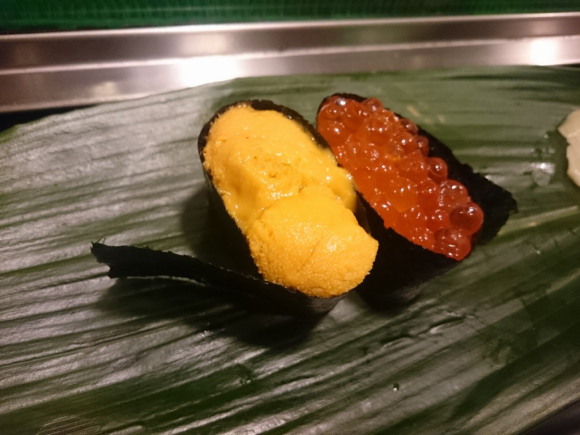
Take a stroll down the streets of Ginza and you’ll have no trouble realizing it’s Tokyo’s epicenter of everything posh and luxurious. The neighborhood is packed with shop after shop boasting high-end fashion, jewelry, and dining, so it’s only natural to think that any sushi restaurants in the area cater to an upscale clientele.
That being said, three reporters from our Japanese-language sister site began to wonder what would happen if they went to a Ginza sushi restaurant dressed to varying degrees of formality and ordered a special o-makase (“leave it to the chef”) course.
Would they each be offered different menu items depending on how they were dressed? Would their bills come out to be significantly different? With these burning questions in mind (and the prospect of eating sushi in the guise of journalism), they decided to conduct a little experiment to find out for themselves!
■ Going to a sushi restaurant while dressed three different ways
To recap, our reporters wanted to know how much the way they dressed would affect the bill and whether the food they were served was either cheaper or more expensive. To find out the answers to these questions, three of our illustrious Japanese reporters separately visited the same sushi restaurant in Ginza. Each was dressed in a different manner: Nakano went dressed from head-to-toe in casual Uniqlo gear (even going so far as to slip on a pair of their casual shorts); the intrepid Mr. Sato went decked out in some of his best “luxury gear;” and a dashingly dressed male reporter, whom we’ll refer to as “Elite Salaryman,” went dressed in a formal office get-up.
▼ Mr. Sato makes his grand entrance
Before we reveal the specific results of their dining experiment, we should tell you that although all three of them ordered the o-makase course, in which the choice of sushi is made by the restaurant staff, and all three of them received different totals on their bills.
■ Accounting for the different bills
Here’s a rundown of what each of reporter had to pay at the end of their meal:
1. Nakano’s 20 pieces of sushi and one drink came out to be 7,100 yen (US$58.02).
2. Mr. Sato’s two drinks, an appetizer, and 23 pieces of sushi came out to be a little less than 13,000 yen ($106.23).
3. Elite Salaryman’s three plates of food/sashimi and nine pieces of sushi came out to be a little less than 12,000 yen ($98.05).
▼ One of Elite Salaryman’s scrumptious servings of sushi
Comparing the actual meals themselves, the three concluded that the kinds of sushi served to both Nakano and Mr. Sato were very similar. Elite Salaryman, on the other hand, was mainly served food that would pair well with his drink of choice, but he noted that the quality of the sushi didn’t seem to differ regardless.
All in all, our reporters unanimously agreed that the difference in pricing was in no way due to their outer appearances; the restaurant did not purposely charge Nakano less due to his casual Uniqlo outfit, nor did they overcharge the other two based on their fancier clothing. The following are some of the factors that they determined could have influenced the different bill outcomes:
- All three of them had different servers, who asked them differing questions when placing their orders. The way they answered questions such as “Would you like sushi from the start?” and “Would you prefer sushi or other dishes?”, took each of their orders in a different direction.
- The longer they talked with their respective servers, the more likely they were to unintentionally order more food. In fact, this is exactly what happened to our chatterbox Mr. Sato–he ended up ordering a lot of food because he couldn’t stop talking.
- The servers were somehow able to invariably sense when each one of them was getting full, so they ended the meal at different times for each person (it took Mr. Sato a longer time to get full than it did for Nakano).
In conclusion, it seems like the servers tried to pinpoint how each individual would like his food to be served, and therefore tailored the course of the meal accordingly.
▼ Are we making your mouth water yet?
■ They really hit the mark with this place!
Although all three of our writers ended up with slightly different food and monetary totals, they were all extremely satisfied with their meals. They left the place gushing about their experiences, saying things like “It’s just as I expected–Ginza sushi really is on a different level!” and “That was the best!”
By the way, the particular restaurant that they visited for this little experiment is called Hakodate Sushi Headquarters. Although its main location is in Hakodate, Hokkaido, the Tokyo Ginza branch appears to be doing quite well. For a sushi restaurants in Ginza, it’s about what you’d expect in price at around 8,000-10,000 yen ($65.27-$81.60) per person.
Although our reporters entered the restaurant with a veiled purpose, they actually hit upon a very decent place to dine. They would definitely recommend it to anyone who’s looking for some quality sushi in Ginza!
Restaurant information
Hakodate Sushi Headquarters–Tokyo Ginza Branch / はこだて鮨金総本店 東京銀座店
Address: Tokyo-to, Chuo-ku, Ginza 8-7-9 Ryuma Building 1st floor
東京都中央区銀座8-7-9 龍真ビル1F
Open Weekdays 5 p.m.- 2 a.m., Saturdays/holidays 4 p.m.- 10 p.m.
Closed Sundays
Website
Lastly, get ready for an appetizing photo dump!
▼ Here’s the food that Mr. Sato ate for 13,000 yen ($106.23).
▼ Here’s the food that Elite Salaryman ate for 12,000 yen ($98.05).
▼ Here’s the food that Nakano ate for 7,100 yen ($58.02).
All images © RocketNews24
[ Read in Japanese ]